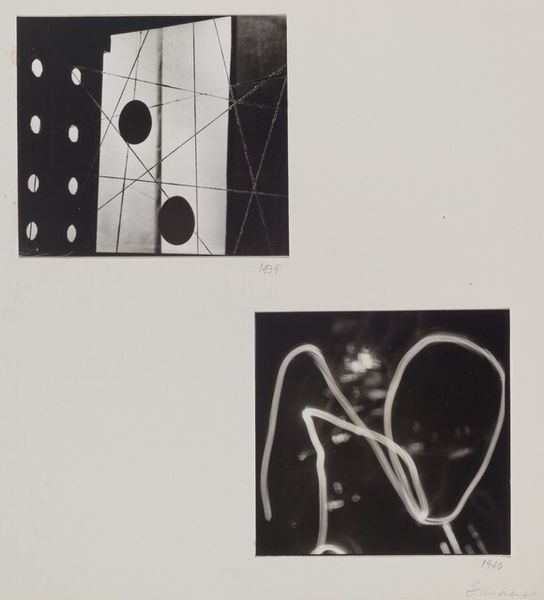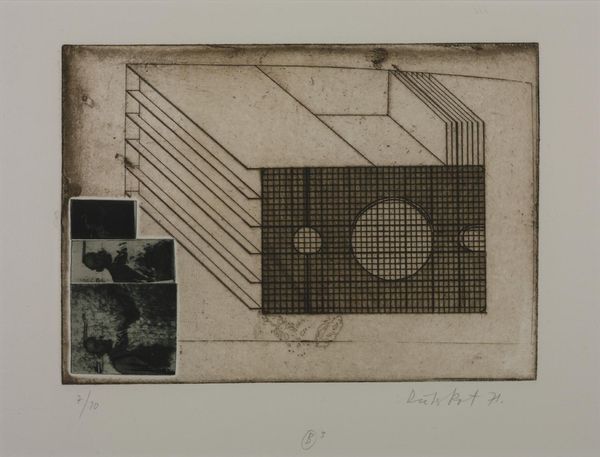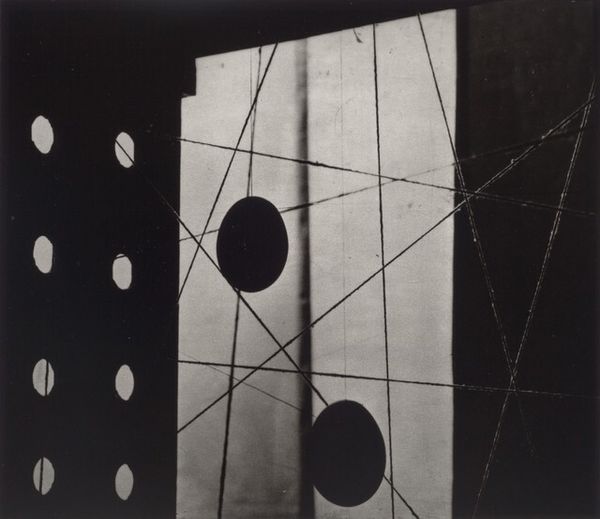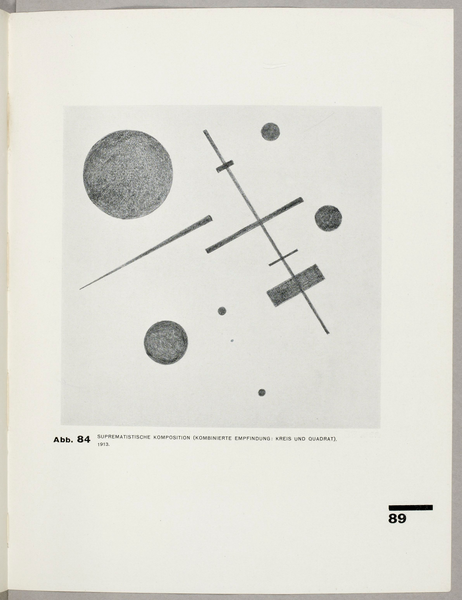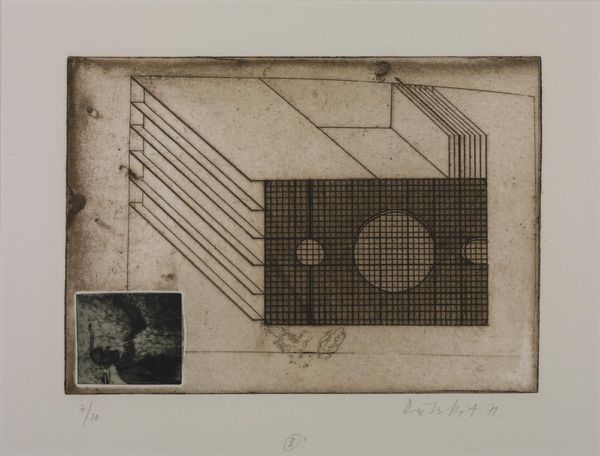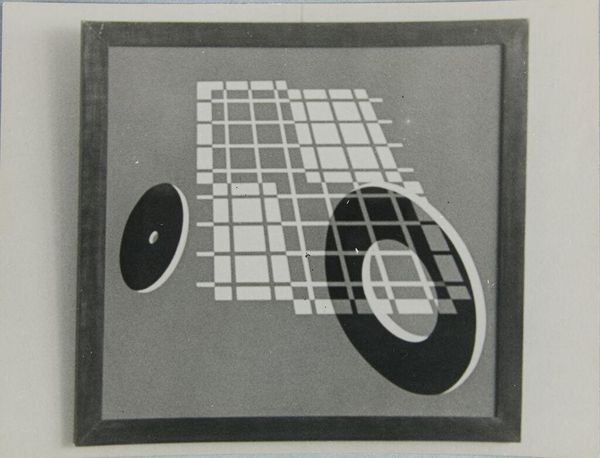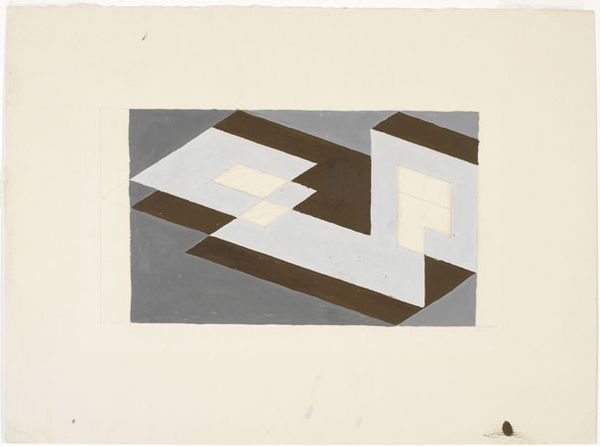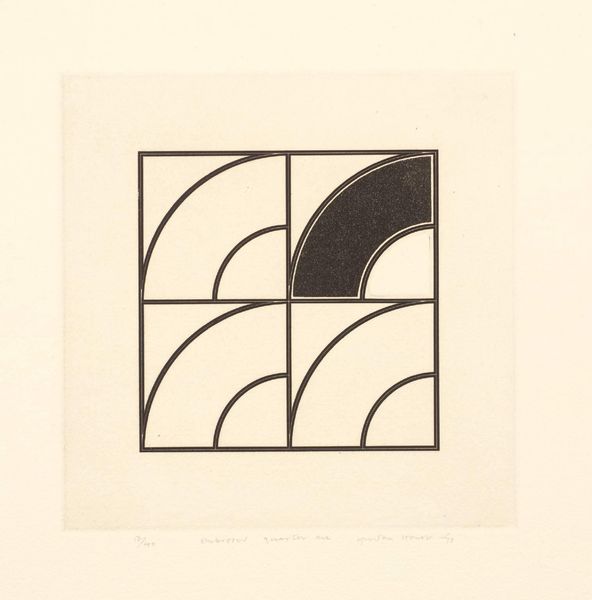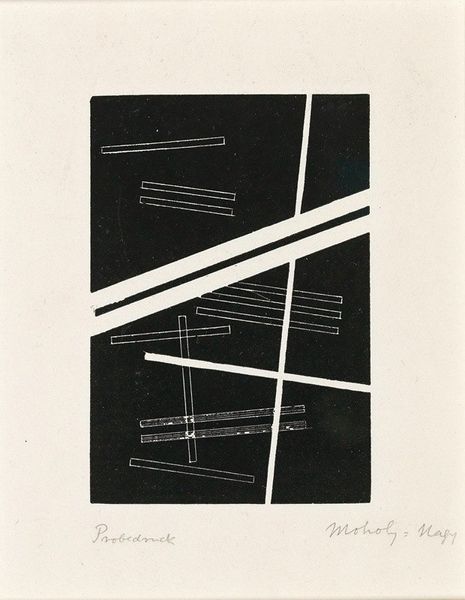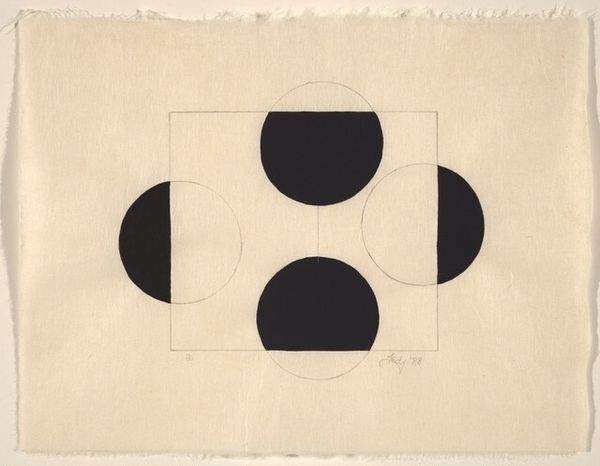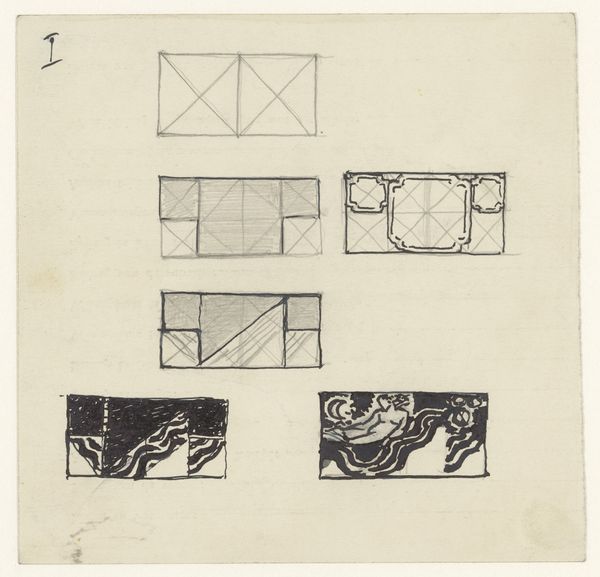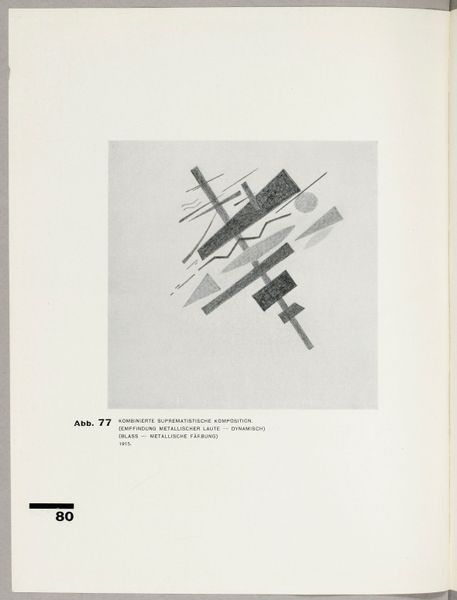
photogram, photography
#
still-life-photography
#
negative space
#
photogram
#
constructivism
#
form
#
photography
#
geometric
#
abstraction
#
line
#
bauhaus
Dimensions: image (top): 7.7 × 11.2 cm (3 1/16 × 4 7/16 in.) image (bottom): 10.4 × 13.8 cm (4 1/8 × 5 7/16 in.) mount: 31.8 × 30.6 cm (12 1/2 × 12 1/16 in.)
Copyright: National Gallery of Art: CC0 1.0
Nathan Lerner made this maquette page with gelatin silver print images sometime in the late 1930s. What strikes me most is how these photographs elevate the everyday – eggs and abstract constructions – through the then-modernist lens of the Bauhaus school. Lerner was clearly experimenting with light and shadow, using the gelatin silver process to create sharp contrasts and dramatic compositions. The way he frames these simple objects transforms them, making them appear almost otherworldly. The influence of the Bauhaus is evident not only in the compositions, but also in the photographic process itself. The gelatin silver print was widely used at the time, allowing for mass production and distribution of images. This reflects the Bauhaus ethos of bringing art and design to the masses, blurring the lines between high art and industrial production. Ultimately, this work reminds us that even the most mundane materials and processes can be elevated through the artist's vision, challenging our notions of what constitutes art.
Comments
No comments
Be the first to comment and join the conversation on the ultimate creative platform.
